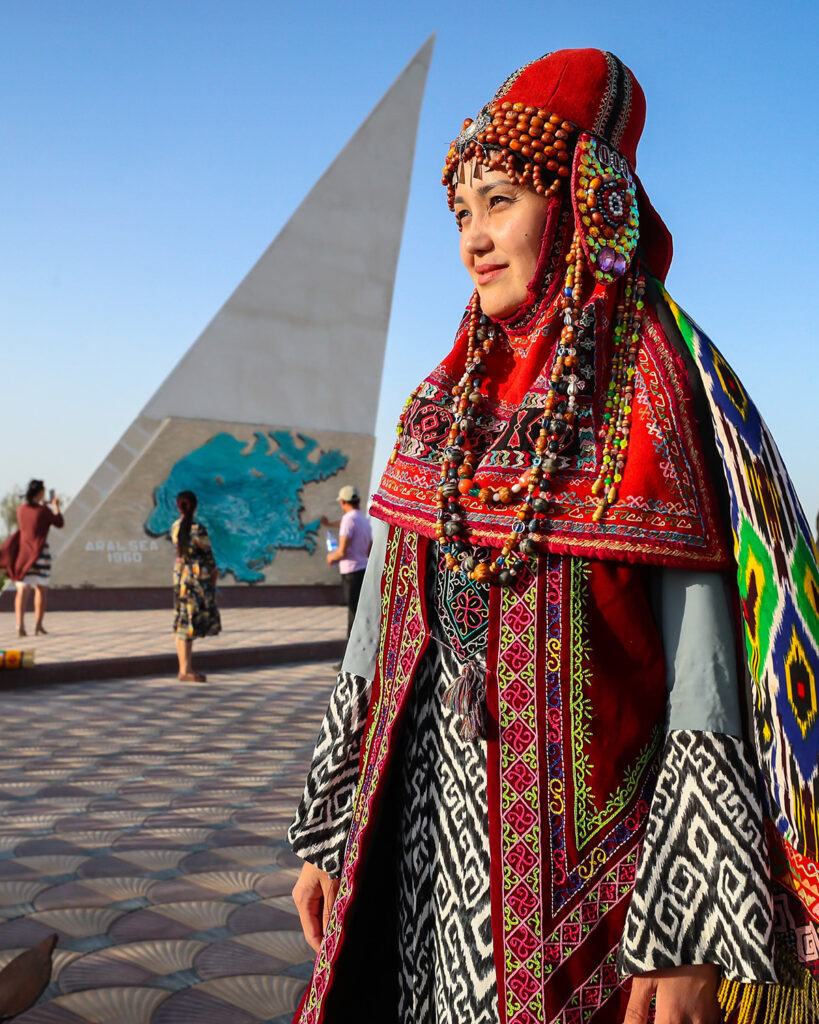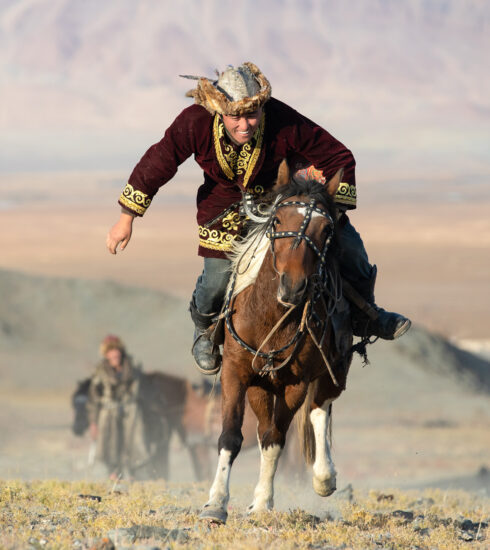Your guide to Stihia – Central Asia’s answer to Burning Man
Join locals and visitors alike at this wild music festival amongst the decaying hulks of the Aral Sea.
Central Asia is the Silk Road, camel caravans winding their way across the deserts, nomads in their yurts, and bejewelled mosques and madrassas in UNESCO World Heritage cities.
But beyond the romantic stereotypes which draw most tourists to the ‘Stans, there’s also a cutting-edge contemporary cultural scene, growing environmental activism, and thirst for innovation.
These unexpected elements come together at the annual Stihia Festival, Central Asia’s answer to Burning Man.


Stihia takes place at the end of the world, or at least that’s how it seems.
The ship’s graveyard in Moynaq, Karakalpakstan (an autonomous republic within Uzbekistan) is 200 km drive from the nearest city.
It is surrounded by the Aral Kum, the desert which formed as the Aral Sea disappeared.
Before Stihia launched in 2017, the only visitors who came here were disaster tourists, spectators for what’s arguably the greatest environmental disaster of the 20th century, the shrinking of the Aral Sea.
It’s a desolate, post-apocalyptic place.
But Stihia is not only increasing awareness of the tragedy; it is proposing solutions and bringing hope.


At a superficial level, Stihia is a music festival.
The 2021 event – hosted safely over a long weekend in May – saw a line-up of electronic music producers and DJs from both Central Asia and Europe.
Big name acts including Berlin-based Ah! Kosmos and Russian DJ and producer Nina Kraviz topped the bill.
There was also a chance to hear less well-known artists such as Kyrgyz DJ Zack and home-grown double act Dzenpunk.
Steampunk fans and Instagrammers mingled in the crowds with electronic music lovers from across Uzbekistan and beyond, but also local families from Moqnaq and other parts of Karakalpakstan.
Tickets to Stihia are free, and the diverse audience is part of its appeal.

Stihia’s location is a key component of the event. The rusting skeleton ships and the absent sea are a poignant backdrop.
By day, there are walking tours of Moynaq, exploring the environmental disaster and its impact on the climate and communities.
The Stihia N+1 forum brought together scientists, artists, and business leaders, as well as curious ravers, to explore how human activity impacts our present and future.
Tree planting and capacity building in the Aral Sea region topped the N+1 agenda. And as Karakalpakstan was traditionally a region of nomads, with a distinctive cultural identity, there were also workshops in yurt building and Karakalpak applied arts.


Late at night, once the last DJ’s playlist has fallen silent, Stihia offers epic stargazing.
Karakalpakstan has some of the world’s darkest night skies, and this year’s festival coincided with the new moon.
Work is underway to establish an Aral Sea National Park, which in time would be a strong candidate for International Dark Sky Places status.
But until such infrastructure is in place, Stihia offers an unrivalled opportunity to visit Moynaq and experience the best Karakalpakstan has to offer.
How to attend the Stihia Festival
Where: Moynaq, Karakalpakstan
Website: Stihia.org
How: People Travels organises Stihia packages, as well as tours of Karakalpakstan and Uzbekistan.
Main image: Entrance to the 2018 Sithia Festival (© Stihia Festival)






